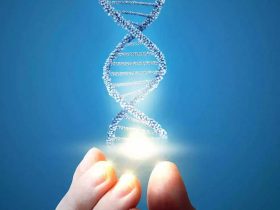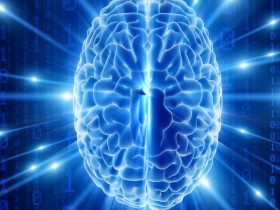John Sanford is a brilliant geneticist who taught at Cornell and other institutions, and retired wealthy from his over 30 patents. His book “Genetic Entropy” – first published in 2005 and most recently updated in 2014 – is a devastating critique of Darwinian theory. Like me, John Sanford converted from Atheism to Belief because of the evidence of science.
Sanford’s book describes and documents amazing evidence of design. What I liked most, however, was his cute example of why Darwinian theory is nonsense.
Imagine you have a little red wagon, the type a child would pull. Imagine you also have an instruction manual that tells you how to build the wagon from scratch. The manual is complete. It tells you not only how to connect the parts, but how to manufacture each part. So there are instructions for how to manufacture steel and shape it exactly into the steel parts of the wagon. There are instructions for how to manufacture rubber and shape it into the tires of the wagon. There are instructions for how to manufacture red paint and how and where to paint the wagon. And so on, a complete instruction manual.
Now imagine three more things. First, imagine that you (or some other scribe) makes copies of the instructions, but sometimes makes mistakes. So each instruction manual is slightly different, and each is used to build a little red wagon. Second, imagine there is an assembly line in a factory that constantly builds new wagons based on its unique instruction manual for each one. Third, imagine there is a judge who reviews the wagons coming off the assembly line, rejects dysfunctional wagons, and preserves any “good” changes that occur.
We have now created an analogy to mutation and natural selection. The cute little red wagon represents what we might mistakenly call “simple” one-celled life. We now know each cell is like a city, with factories, libraries, transportation systems and so on, but let’s imagine life starting like a little red wagon. The process of random errors in the instruction manual is of course analogous to random mutations in the DNA code of that “simple” cell. The “judge” here represents natural selection. The judge has no control over the mutations, over which coping errors are made and where they occur in the instruction manual. The judge only gets to look at the final product off the assembly line and decide whether it should survive.
Darwin’s theory is that, if you keep doing this, you will eventually get a nice shiny blue tricycle. Yes, somehow, the paint color will switch to blue, the wheels will morph from four to three, the handle will reshape into a steering bar, and so on. I think we all know that is nonsense. What you may easily get is a wagon with a defective wheel. But you are not going to get the front two wheels to merge into a single front wheel, simultaneously with the steel shape being redesigned. Again, the “judge” of natural selection doesn’t get to separately fine tune a particular part of the instruction manual. It can’t say, for example, let’s only make errors in the section on paint color until we get the shade blue, and then we’ll mutate the instructions for the wheels. The mutations/errors are across the entire instruction manual, and all the judge can do is look at the final product and decide if it will survive.
Actually, Darwin’s theory is even more ridiculous. The theory predicts that, if you keep doing this long enough, keep mutating the instruction manual and letting only wagons/whatevers with the right features “survive,” you will eventually get an intergalactic spaceship with warp drive and a holodeck. Yes, I am serious. The gulf between “simple” one-celled life and human beings – with our perhaps 30 trillion interconnected cells, senses, muscles, organs, and the astonishing abilities of the human brain – is probably greater than that between the cute little red wagon and a spaceship.
I think this example helps grasp, at a basic, non-mathematical level, why Darwin’s theory is nonsense. Random mutations cannot invent new technology. It’s not mathematically possible; it has never happened.
“Entropy” is a fancy word for the general tendency of things to deteriorate. That perfect instruction manual for the first cute little red wagon is lost when that wagon dies. What really happens as the copying errors increase, and the manuals get more and more corrupted? What is the future of the human race? Sanford’s book focuses on that, and I intend to discuss that in my next blog.
Thanks for reading.

















Leave a Reply